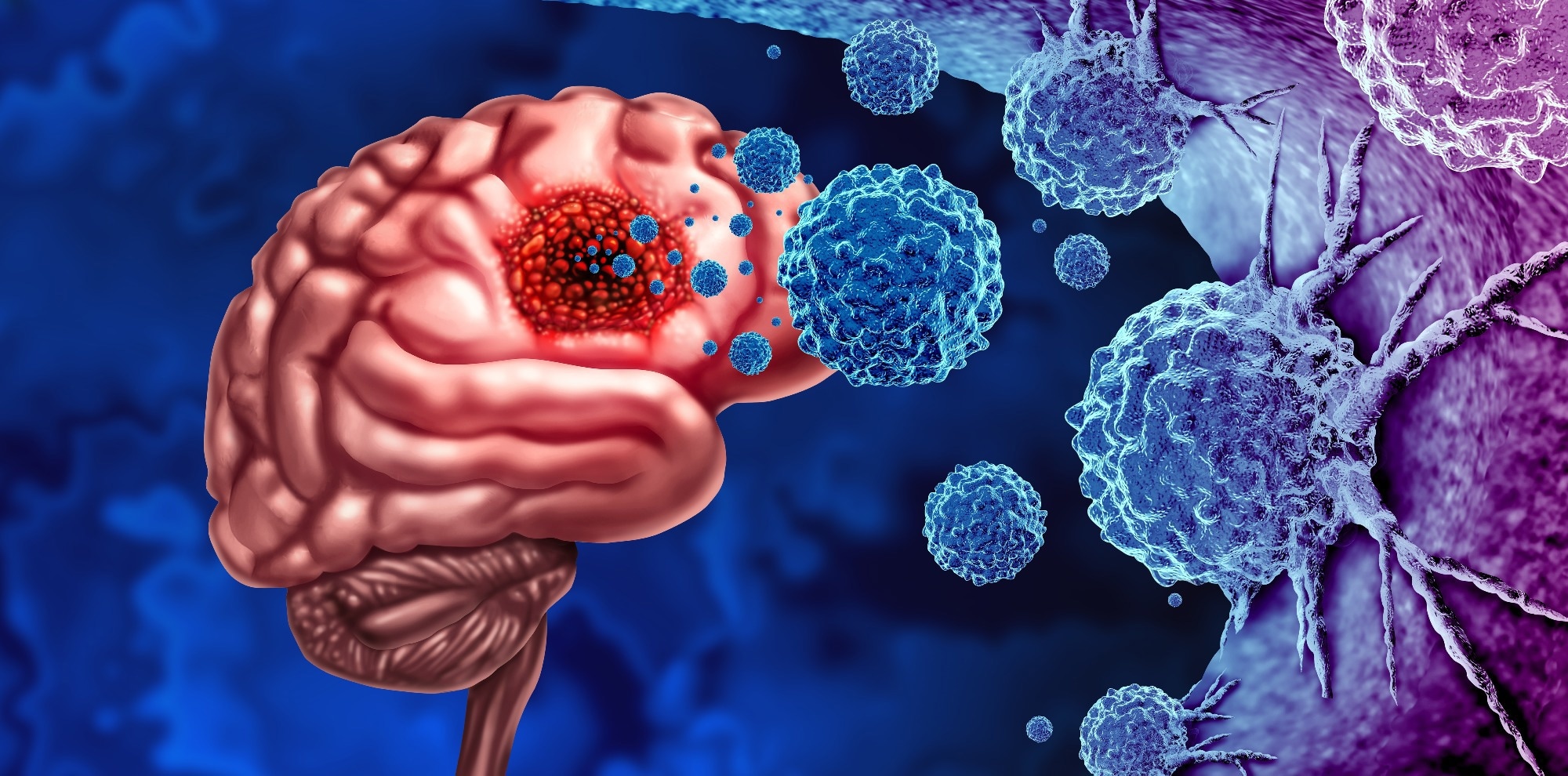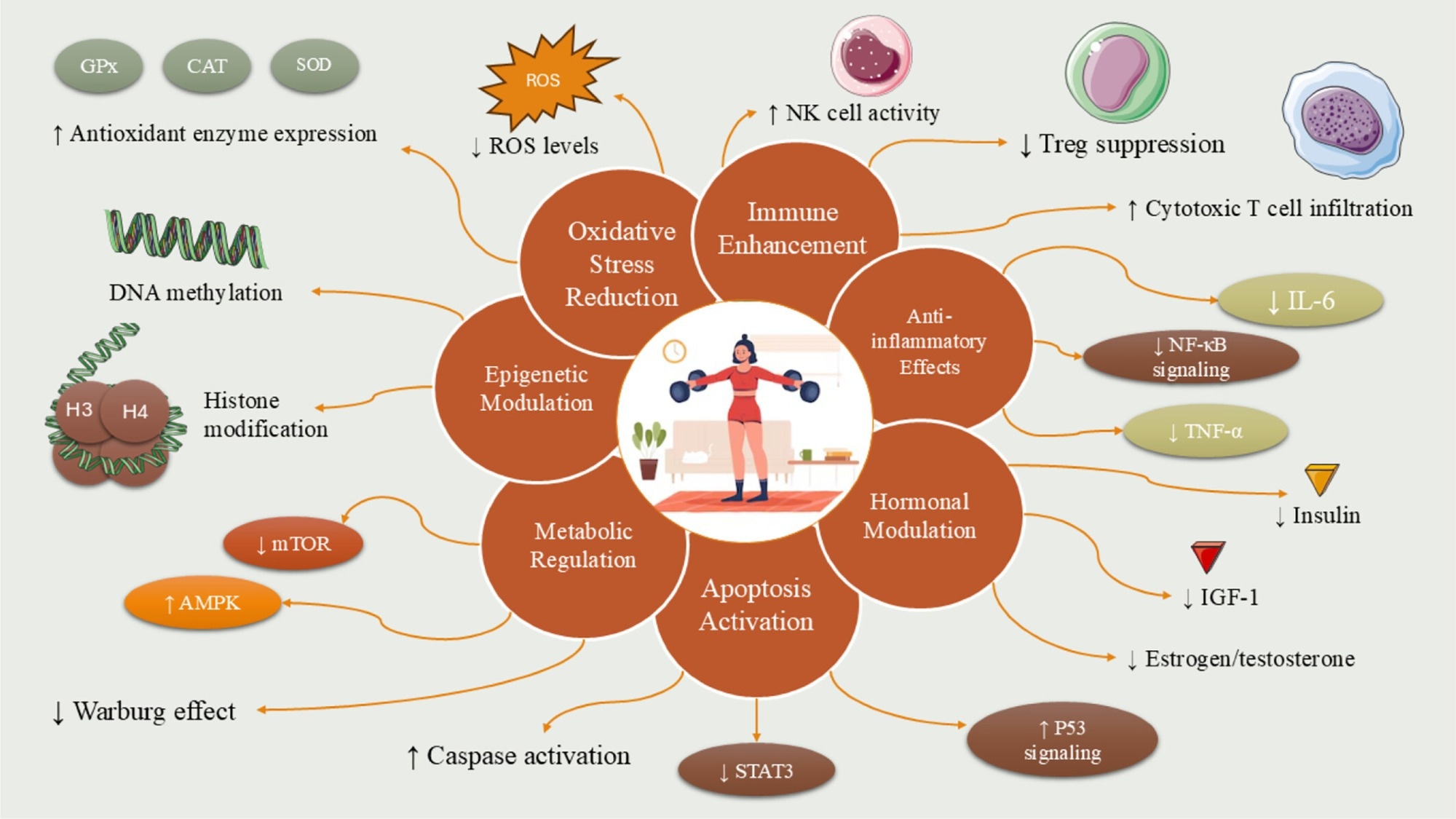Scientists reveal how plant-based compounds and targeted workouts could work together to protect the brain, slow tumor progression, and improve life for people with gliomas.
 Review: Polyphenol-Based Nutritional Strategies Combined With Exercise for Brain Function and Glioma Control: Focus on Epigenetic Modifications, Cognitive Function, Learning and Memory Processes. Image Credit: Lightspring / Shutterstock
Review: Polyphenol-Based Nutritional Strategies Combined With Exercise for Brain Function and Glioma Control: Focus on Epigenetic Modifications, Cognitive Function, Learning and Memory Processes. Image Credit: Lightspring / Shutterstock
In a recent review published in the journal Food Science & Nutrition, researchers synthesized evidence on how dietary polyphenols combined with exercise influence epigenetic regulation, cognition, and glioma control, outlining practical applications.
Background
One in two people will face a brain-health challenge over their lifetime, through aging, stress, or disease, and for many, the blow lands on attention, memory, and mood. Gliomas, the most common primary tumors of the central nervous system (CNS), add a harsh edge: seizures, fatigue, and thinking changes that disrupt work and family life. Diet and movement are two levers within control. Plant polyphenols in tea, berries, and turmeric ease inflammation and oxidative stress; exercise builds brain resilience and quality of life. Emerging research hints that these tools work better together through epigenetic pathways. Further research must define who benefits, when, and how.
How Glioma Shapes Patient Lives
Gliomas are the most common primary tumors of the CNS. Modern classification goes beyond World Health Organization (WHO) histology by integrating molecular markers that forecast response and survival. Two standouts are isocitrate dehydrogenase (IDH) mutation and combined loss of chromosomal arms 1p/19q (codeletion).
IDH mutations generate the oncometabolite 2-hydroxyglutarate, trigger wide epigenetic reprogramming, and are early events that generally predict better progression-free survival than wild-type disease. In contrast, IDH-wild-type glioblastoma often has a poorer outlook.
Telomerase reverse transcriptase (TERT) promoter mutations, together with IDH status and 1p/19q codeletion, further refine prognosis. "Triple-positive" lower-grade tumors tend to fare best, while tumors with only TERT mutations correlate with poor prognosis, especially in the absence of MGMT promoter methylation.
Meanwhile, O6-methylguanine-deoxyribonucleic acid methyltransferase (MGMT) promoter methylation predicts sensitivity to the alkylating agent temozolomide. These features explain why two people with the same histology can face very different journeys.
Why Pair Polyphenols with Exercise?
Dietary polyphenols, such as curcumin, resveratrol, quercetin, and epigallocatechin gallate (EGCG), modulate deoxyribonucleic acid (DNA) methylation, histone marks, and noncoding ribonucleic acid (RNA), shifting gene programs linked to neurogenesis, synaptic plasticity, and gliomagenesis.
Quercetin and curcumin face significant bioavailability challenges, requiring nano-formulations or absorption enhancers like piperine for clinical efficacy. Exercise induces its own epigenetic remodeling, improves mitochondrial function, and up-regulates brain-derived neurotrophic factor (BDNF), a master switch for learning and memory.
Converging on these pathways, polyphenols and exercise together offer a plausible, non-pharmacological route to enhance cognition and restrain tumor signaling by restoring tumor-suppressor activity and attenuating oncogenic pathways; however, these synergies remain largely theoretical and preclinical. Put simply, food chemicals and movement nudge the same molecular dimmers that help brains learn, and tumors slow down.
 Role of physical activity in cancer prevention and therapy. Engaging in regular physical exercise offers significant benefits in both the prevention and treatment of cancer. For individuals affected by cancer, exercise contributes in three major ways: It reduces the likelihood of developing cancer, enhances the effectiveness of therapeutic interventions, and alleviates many of the adverse side effects associated with treatment. Mechanistically, the anticancer effects of physical activity are primarily attributed to its ability to inhibit tumor cell proliferation, induce programmed cell death (apoptosis), regulate tumor-related metabolic pathways, and enhance immune system function.
Role of physical activity in cancer prevention and therapy. Engaging in regular physical exercise offers significant benefits in both the prevention and treatment of cancer. For individuals affected by cancer, exercise contributes in three major ways: It reduces the likelihood of developing cancer, enhances the effectiveness of therapeutic interventions, and alleviates many of the adverse side effects associated with treatment. Mechanistically, the anticancer effects of physical activity are primarily attributed to its ability to inhibit tumor cell proliferation, induce programmed cell death (apoptosis), regulate tumor-related metabolic pathways, and enhance immune system function.
What Exercise Adds
Across ages, regular aerobic training improves executive function, memory, and mood; neuroimaging shows larger hippocampal volume and better cerebral blood flow. Resistance training at moderate-to-high intensity enhances visuospatial skills and working memory, likely via insulin-like growth factor-1 signaling and improved prefrontal perfusion.
Findings for combined (concurrent) programs are mixed but show significant cognitive improvements when integrated with cognitive tasks (e.g., dual-task training). Meta-analyses indicate moderate-duration, moderate-frequency programs can meaningfully increase global cognition, with pronounced effects in clinical and older populations.
Practical takeaways: moderate-intensity aerobic activity (e.g., brisk walking or cycling) 2–3 times per week for at least 30 minutes supports memory and executive function; resistance training two to three times weekly similarly aids cognitive performance and brain plasticity. These gains translate into real-life benefits, such as safer mobility, smoother medication management, and confidence to return to work or study.
Polyphenols as Epigenetic Signal Shapers
Resveratrol exerts antioxidant, anti-inflammatory, and neuroprotective actions and, in preclinical models, protects neurons from amyloid-beta toxicity; anthocyanin-rich blueberries have been linked with memory benefits in older adults. Curcumin can influence histone acetylation and DNA methylation by inhibiting histone deacetylases and DNA methyltransferases.
The practical challenge is bioavailability. Combining curcumin with piperine or using nanoparticle formulations (e.g., nanocurcumin at 80 mg/kg in rodent studies, a dose from cited preclinical work, not a clinical recommendation) improves absorption and may enhance brain and tumor-microenvironment effects.
Together, such compounds are positioned to tune gene expression toward synaptic resilience while damping inflammatory and proliferative signaling relevant to glioma biology.
Where Diet Meets Movement
Mechanistically, both levers meet at epigenetic control points and inflammatory tone. Polyphenols can help restore tumor-suppressor gene activity and temper oncogenic signaling; exercise raises BDNF, enhances neuroplasticity, and remodels chromatin in learning-and-memory networks.
The integrated model predicts additive or even synergistic gains: clearer thinking and stronger memory through shared neurotrophic and chromatin effects, and a less permissive tumor microenvironment through stress-response and metabolic rebalancing, though these mechanisms are hypothesized and require clinical validation.
To test this rigorously, the field needs trials that pair specific polyphenols (for example, resveratrol, curcumin, or EGCG) with defined aerobic, resistance, or combined protocols; track cognition and tumor control; and embed epigenomic profiling to identify responders and optimal dose, timing, and formulation.
Personalization, Timing, and Feasibility in the Real World
Two pragmatic details help translation. First, timing: cognitive performance and training responses follow circadian rhythms. Aligning sessions with a person’s chronotype, often late-afternoon or early-evening peaks, can amplify benefits, while guarding sleep from late-night blue light (which disrupts melatonin and impairs next-day cognition) preserves next-day cognition.
Second, tailoring: dose, timing, and formulation govern polyphenol bioavailability; pairing intake with meals and using absorption enhancers where appropriate can matter.
Finally, programs should meet people where they are: prioritizing short, frequent bouts; home-based options; and professional supervision for those with fatigue or balance issues, recognizing that consistency and safety are critical in glioma patients.
Conclusions
This review concludes that lifestyle can function as an adjunct therapy for CNS tumors: polyphenol-rich nutrition plus structured exercise acts on epigenetic and neurotrophic pathways. Together, they modulate DNA/RNA programs, elevate BDNF, and render the glioma microenvironment less permissive. Heterogeneity across IDH status, MGMT promoter methylation, 1p/19q codeletion, and TERT promoter alterations implies variable responses, making personalization essential.
Future trials should standardize exercise dose, specify polyphenol type/formulation (e.g., EGCG or nanocurcumin), and integrate epigenomic and clinical outcomes. If validated, this dual strategy could convert everyday choices into measurable gains in memory, independence, and quality of life for people living with glioma. However, current evidence for combined polyphenol-exercise benefits remains preclinical.
Journal reference:
- Yang, G., W. Yang, & F. Kiarasi. (2025). Polyphenol-Based Nutritional Strategies Combined With Exercise for Brain Function and Glioma Control: Focus on Epigenetic Modifications, Cognitive Function, Learning and Memory Processes. Food Science & Nutrition. 13(8). DOI: 10.1002/fsn3.70758, https://onlinelibrary.wiley.com/doi/10.1002/fsn3.70758